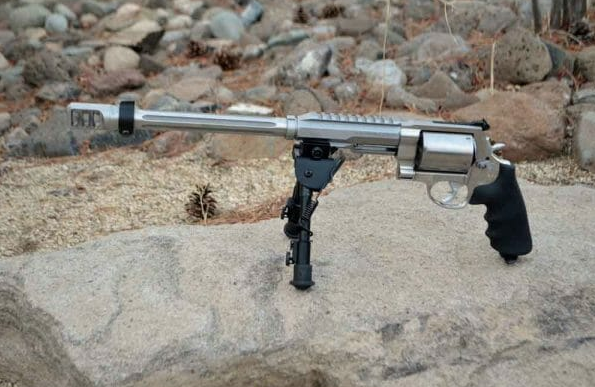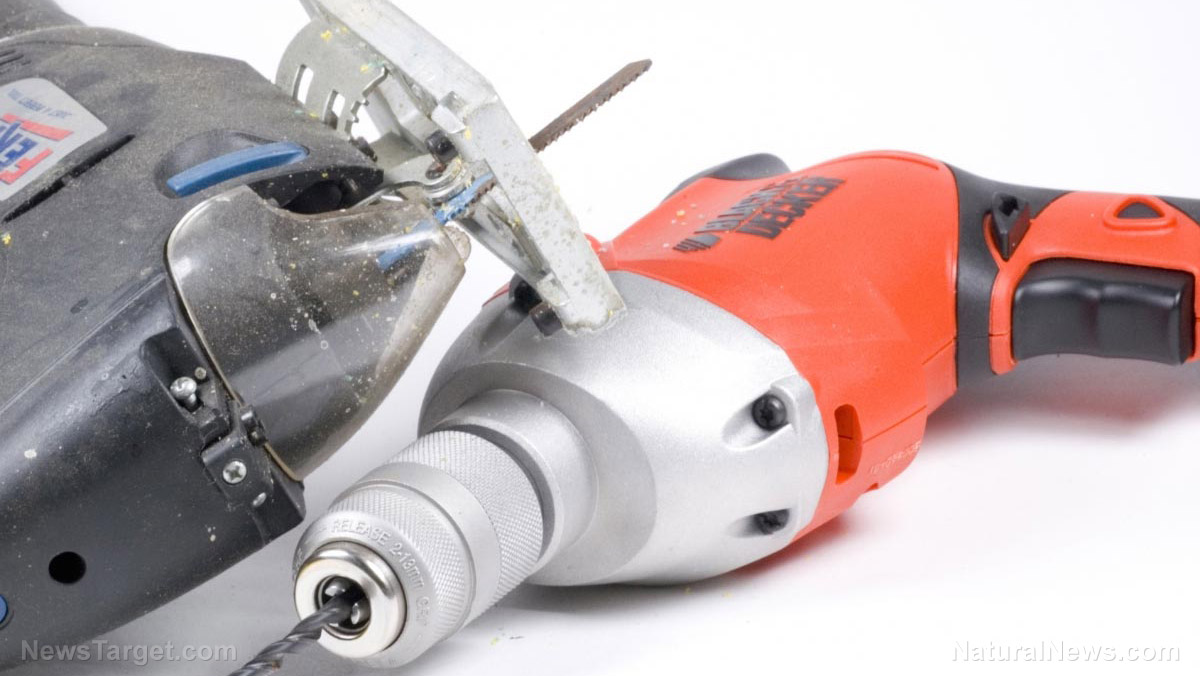Hunting with a handgun: What to expect when shooting powerful revolvers
01/15/2018 / By Jayson Veley

To say that the Smith & Wesson 460 XVR is “a lot of gun” is, quite frankly, a huge understatement.
While firearms like the Remington XP-100 and the Savage Striker were often considered to be awkward to shoot by gun enthusiasts, and with handguns like the Thompson Center Contender and Encores automatically at a disadvantage due to the fact that they are single shot, Smith & Wesson eventually developed the S&W 500 and S&W 460. These are powerful guns; as a matter of fact, the Smith & Wesson 460 XVR is the most powerful revolver on the face of the earth, complete with a small bipod and side-venting muzzle break.
As explained by AmmoLand.com, “Many shooters mistakenly believe that they were developed for Brown Bear encounters in the Great White North. On the contrary, they were developed as serious hunting handguns for big game as they ballistically mirrored the powerful .30 caliber Magnum rifle rounds in a (slightly) more portable package revolver style.” (Related: Female ELK are becoming super smart and are learning how to avoid hunters using stealth.)
Before the all-important information regarding how the gun actually performs, it’s necessary to provide a bit more historical context. Back in the year 2005, Smith & Wesson officially released the 460 S&W on their powerful X-Frame, which was initially meant to be used for the previously-developed 500 S&W Cartridge. The frame of this firearm is crafted from stainless-steel hammer forgings and brushed with a sleek satin finish. The unfluted cylinder can hold up to five rounds, and as previously mentioned, the barrel comes crowned with a side-venting muzzle break so as to minimize barrel rise and release gases out of the sides. As an added bonus, the muzzle break also creates some incredible fireworks.
So what is it like to shoot the most powerful revolver on planet Earth? As explained by AmmoLand.com, despite the fact that the Hornady 200 grain XTP rounds they were using during their test resulted in a muzzle velocity of 2,370 FPS and a kinetic energy of 2,495 foot lbs. of energy, there was actually a lot less recoil than originally anticipated.
In addition to being “less punishing” than the S&W 500, the website explained that some Second Amendment enthusiasts compare the Smith & Wesson 460 XVR to a heavy 44 Magnum, but stated that they “do not find that to be accurate.” Rather, they explained, “It was much more comparable to a 454 Casull. We suspect the 5.5 pounds of revolver and bipod soak up much of that and the Hogue grips help out quite a bit as well.”
AmmoLand.com ultimately concluded that if you are a hunter looking for a powerful handgun that is capable of taking down virtually any animal in North America, “this one is right up your alley.” Further, “If you are a certified power fiend who wants to push the most energy down range; this revolver has your name on it.” (Related: According to a recent study, geese are now outsmarting hunters by spending hunting season in cities.)
While the Smith & Wesson 460 XVR may be a powerful firearm capable of taking down big game, there are a number of other options for hunters that insist on hunting with handguns as well. The Ruger Redhawk revolvers, for example, are chambered in .44 Magnum, .45 Colt, and .45 ACP with barrel sizes of 2.75 inches, 4.2 inches, 5.5 inches and 7.2 inches. Other ideal hunting handguns include (but are certainly not limited to) the Smith & Wesson Model 29, the Taurus Raging Bull, the Glock 20, and, as mentioned in the article published by Ammo Land, the Thompson-Center Contender.
Still, while there may be some benefits to going hunting with a handgun, the best choice for taking down wild animals remains the traditional hunting rifle.
Sources include:
Tagged Under: firearms, Gear, guns, hunting, S&W 460 XVR, Second Amendment, survival
RECENT NEWS & ARTICLES
COPYRIGHT © 2017 GEAR.NEWS
All content posted on this site is protected under Free Speech. Gear.news is not responsible for content written by contributing authors. The information on this site is provided for educational and entertainment purposes only. It is not intended as a substitute for professional advice of any kind. Gear.news assumes no responsibility for the use or misuse of this material. All trademarks, registered trademarks and service marks mentioned on this site are the property of their respective owners.




















